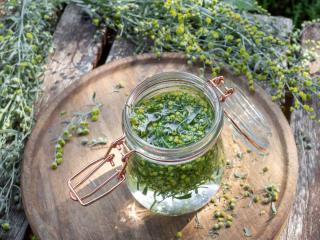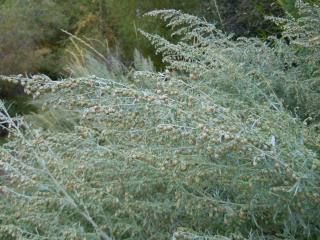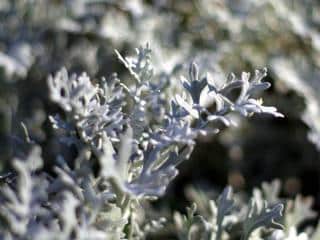

Very fragrant, wormwood (Artemisia absinthium) forms the base for an effective liquid manure, serving as a repellent to push away certain pests, and also as a curative treatment against certain fungal diseases.
Discover our recipe to make it and the multiple ways to use it, pure or diluted.
Easy to grow in a garden or vegetable garden, sometimes invasive, wormwood is rich in thujone, a compound long accused of driving people mad!
To go further:
Harvest 2.2 lbs of wormwood leaves and flowers (1 kg) between July and October using pruning shears.
 Place the harvest in a plastic bucket without chopping or grinding it
Place the harvest in a plastic bucket without chopping or grinding itIt’s worth noting that use of a metal bucket is not recommended due to possible container oxidation (it’ll rust fast). If you don’t collect rainwater, you can use tap water, but you should let it settle for 48 hours to get rid of all its chlorine.
This wormwood manure is very useful both in ornamental gardens and in vegetable patches due to its various virtues. It also plays a part in organic pest control, serving as an insecticide or insect repellent. Likewise, it has fungicidal action to eradicate certain fungal diseases.
 Fermented wormwood manure is especially useful for getting rid of numerous insects such as:
Fermented wormwood manure is especially useful for getting rid of numerous insects such as:
To fight these insects, use wormwood as a decoction for even more effectiveness. For this, soak a handful of wormwood leaves and flowers for 24 hours in water. Then, boil for 20 minutes and let it cool (keep it covered). Spray the undiluted decoction when these different insects are flying.
Wormwood manure also helps to dramatically keep away aphids, ants and caterpillars. Simply spray pure wormwood manure in the spring. It will also have a repelling action to keep away all the aforementioned flying insects.
Wormwood weedy tea is known to be a powerful fungicide that treats rust on red and black currants. Again, use it undiluted for this purpose.
Apply wormwood manure with a hand sprayer on a day with no rain or wind. Do it very early in the morning or late in the evening. Avoid spraying this manure in the day under bright sun at all costs because foliage on plants may burn because of the concentrated compounds.
 You can store wormwood manure for several months.
You can store wormwood manure for several months.
Use an opaque, airtight container.
Store in a cool, dark and well-ventilated place.
Remember to rinse your hand pump and/or sprayer after use to avoid corroding sensitive parts (spring, nozzles, tubes).
To make use of its repellent properties, you can also plant a few wormwood plants in a corner of the vegetable garden. However, it’s best not to place it in the middle of your crops as it tends to become invasive. In addition, it’s an allelopathic plant, meaning its root system prevents other plants from growing.
A great way to maximize Absinthe without risking an invasion is to regularly pick a few wormwood leaves and place them on the ground between rows of cabbage, beans, and carrots.
→ Also discover: Artemisia vulgaris: common mugwort
An infusion of wormwood, 0.07 oz of dry leaves in 1 cup of hot water (2 grams in 25 cl) for 10 minutes works well against digestive problems and intestinal malfunctions.